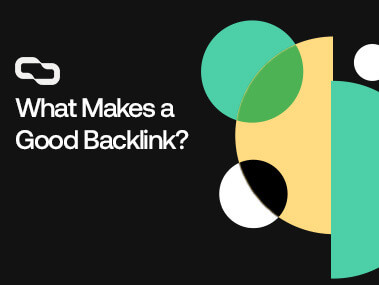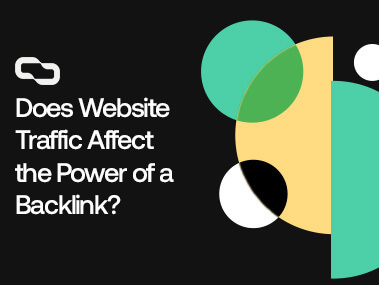Get links on brand new relevant articles for a boost of Authority and Relevance that’ll catapult your SEO. Our links include both DR and Traffic, so you don’t have to choose between one or the other.

What if I told you that you can make your backlinks 5, 6, or even 10 times stronger?
That’s the power of tiered link building.
It’s a simple strategy that is often underutilized by the SEO community, yet, its results on your rankings are phenomenal.
We have been building tiered links for both our clients and our own portfolios for many years now.
And in this guide, I’ll tell you all about it.
From what is tiered link building, its SEO benefits, and its risks to the exact process we use to build tiered links.
Key Takeaways
- Tiered link building is the process of building backlinks to your existing backlinks in order to increase their power and authority.
- A well-executed tiered link-building strategy will help you get more link juice and maintain a natural-looking backlink profile.
- There are some risks involved in tiered link building, such as the potential for Google penalties and the financial investment required.
- A good tiered link-building campaign starts with high-quality tier 1 links followed by well-maintained PBNs as your tier 2s and 3s.
What Is Tiered Link Building?
Tiered link building refers to the act of creating backlinks to your backlinks in order to pass more link juice and increase your search engine rankings.
Here is how tiered link-building works:
Let’s say you have a fitness website.
You start an outreach campaign and land a few backlinks on high domain authority sites.
These are your tier 1 links — they are the links that point directly to your own website.
Now, in tiered link building, what we do is that we build backlinks to our tier 1 links — we call those tier 2 links.
After that, we build links to our second-tier backlinks — these are your tier 3 links.
And so on.
So, what’s the point of doing all that? Why don’t I just build all those links to my website — You might ask?
Well, that’s exactly what I’ll show you in the next section.
What Are The Benefits of Tiered Link Building?
1. Get Cheap Link Juice
Are you familiar with the term PageRank?
PageRank (PR) is an early Google algorithm that assigned each page an authority score ranging from 0 to 10 based on the quantity and quality of backlinks it has.
Basically, the higher the page authority score, the higher it’ll rank on the SERPs.
To this day, PageRank is still used as a Google ranking signal.
What does that have to do with tiered links?
Well, PageRank is a measure of authority and trustworthiness.
This means that a link from a page with a high PR score would have more value, or as SEOs say, pass more link juice than a backlink from a low PR score page.
Using this concept, we use tiered links to increase the PageRank score of the pages linking to us, thus, we make our links much stronger.
We build third-tier links to increase the PageRank score of our tier 2 links, and now since our tier 2 links are stronger, it’ll pass more link juice to our tier 1 links.
Finally, these super-loaded tier 1 links will funnel all that juice into our website — increasing our search engine rankings.
2. Mitigate The Black Sheep Effect
Imagine you have a DR 10 website and you’re trying to rank for a keyword where the average website has a domain rating of 50.
It’ll be very hard to rank for this keyword, as your link analysis will show that there is a huge authority gap between you and your competitors.
You can make up the authority gap by building more links, but you’ll get to the point where you can’t do so without looking spammy.
If the average page has 5 inbound links, you can get away with building 7, maybe 10 high-quality backlinks, but 30? That will raise a lot of red flags.
In many cases, the extra backlinks you build won’t be enough to overcome the authority gap.
The only way to rank for this keyword is to make sure each one of your backlinks passes a huge amount of link juice to your page — loading it with authority and increasing its PageRank score.
That’s where tiered link-building comes into play.
It powers up your 10 links so that they’d have the same effect as 20, 30, or even 40 backlinks.
3. Have a Natural Backlink Profile
The goal of link building is to build as many links as possible while maintaining a natural-looking backlink profile.
Backlinks from forums, link farms, social media links, and other sources can have a positive impact on your rankings, however, you need a large number of them to move the needle.
And how natural it is to have 400 links pointing to one of your pages?
Not natural at all!
By using tiered link-building techniques, we strategically distribute the acquisition of backlinks across multiple tiers to create a more organic and balanced backlink profile.
This approach allows us to avoid the potential pitfalls of having an excessive number of links pointing directly to one page, which may appear unnatural to search engines.
4. Reduced Risk
There is always risk involved with building links.
No matter what “white hat” technique you use, link building is against Google’s webmaster guidelines.
If they could penalize everyone who builds links, they would.
They aren’t doing it because they just can’t.
Now, I’m not saying that all link-building strategies are equally risky.
Some are naturally riskier than others and have a higher chance of penalizing your site. However, generally speaking, the riskier the technique, the more powerful it is.
One of the benefits of tiered links is that it allows you to use the riskier, high-impact link-building techniques without compromising your main site.
For example, instead of building PBN links directly to your money page, you build them to your tier 1 or tier 2 links.
This way, the PBNs will boost your link authority, while being two or three levels far from your main website.
Separating yourself from the low-quality links allows you to get the juice you need without bearing all the risk.
5. Better Link Management
Another advantage of having two to three levels of separation between you and the lower-quality links is that you can easily monitor and manage the links.
Let’s say Google noticed that one of your tier 2 links has a lot of unnatural backlinks, so they decided to deindex it.
Without a tiered backlink architecture, you’ll have to manually remove hundreds or even thousands of links to lift the penalty.
However, if you have a tiered link architecture in place, you just go one tier up and disavow the tier 2 link with all its bad links.
What Are The Risks of Tiered Link Building?
1. Potential Google Penalty
Search engine penalties are the digital equivalent of being blacklisted, leading to a potential deindexing of some of your pages or even your entire website from the search engine results pages (SERPs).
So, why is tiered link building, an SEO strategy that seems so promising, subject to Google’s heavy hand?
Well, Google considers tiered link building a form of link scheming.
This is a direct violation of Google’s Webmaster Guidelines, earning you the wrath of the Web Spam team if detected.
When it comes to tiered link building, caution is the name of the game.
Just as a chef doesn’t spill all his ingredients into a pot without thought, you can’t go on a link-building spree without due diligence.
Don’t be spooked.
When done correctly, tiered link building can be quite safe.
And I’ll show you later how to build first, second, and third-tier links without getting caught.
2. Time Consuming
Tiered link building is a time-devouring monster.
You’re not just building a single set of links to your website.
You’re constructing a multi-tiered architecture, each layer requiring its own unique SEO strategy and resources.
From the initial outreach for tier 1 links to the creation of content for tier 2 and tier 3 links, each step is a project in itself.
And let’s not forget about the monitoring and management of these links.
As your link network expands, so does the complexity of keeping track of all the moving parts.
You’ll need to regularly check the health and performance of your links, making adjustments as necessary to ensure optimal results.
Moreover, the time factor becomes even more critical when considering the potential risks involved.
Google’s algorithms are constantly evolving, and what works today might not work tomorrow.
Therefore, you need to stay abreast of the latest SEO tactics and updates, which adds another layer of time commitment to the process.
3. Opportunity Cost: The Hidden Risk
Time is a precious commodity.
Every minute you spend on one SEO strategy is a minute you’re not spending on another.
This is the concept of opportunity cost, and it’s a risk that’s often overlooked, but it’s one that you need to consider carefully.
As mentioned earlier, tiered link building, while potentially powerful, is a time-consuming process. It can take hours, days, or even weeks of your time.
Now, consider what else you could be doing with that time.
You could be creating high-quality content for your website, engaging with your audience on social media, or exploring other SEO strategies.
Each of these activities could potentially bring more value to your business than tiered link building.
4. It’s Not Cheap
As you delve deeper into tiered link building, you’ll quickly realize that this strategy isn’t for the faint of heart, or more accurately, for the light of wallet.
The financial commitment required for effective tiered link-building can be substantial.
To start with, creating quality content for your tier 1 links is a must.
This often means hiring professional writers or investing significant time in crafting compelling content yourself.
But the expenses don’t stop there.
For your tier 2 and tier 3 links, you’ll need even more content, albeit of varying quality.
This multi-tiered content creation process can quickly add up, making tiered link building a potentially costly endeavor.
Then there’s the cost of acquiring backlinks.
Whether you’re buying links or spending time reaching out for guest post placements, there’s a cost associated with each link you acquire.
And remember, in tiered backlink-building, you’re not just building a handful of links; you’re building an entire ecosystem of interlinked content, which can quickly devour your link-building budget.
5. Not an Evergreen Technique
The landscape of Search Engine Optimization (SEO) changes rapidly.
Techniques that were once hailed as the holy grail of SEO can quickly fall out of favor, replaced by newer, more effective strategies.
This is the case with tiered link building.
While it can be a powerful tool in your SEO arsenal, it’s not an evergreen technique.
Why is that — you ask?
Well, the answer lies in the ever-evolving algorithms of search engines.
Google, in particular, is notorious for its frequent updates.
We’re talking as many as 500 to 600 happening every year.
With each update, the search giant is getting better at spotting and penalizing manipulative SEO practices.
Any technique that attempts to game the system, even if it’s not explicitly a black hat link-building technique, runs the risk of being penalized.
And when that happens, all the time, effort, and resources you’ve invested in your tiered backlink-building system could go down the drain.
Moreover, the effectiveness of tiered link building is heavily dependent on the quality of the links in your tiers.
As search engines become more sophisticated, low-quality or irrelevant links are likely to be devalued, reducing the overall effectiveness of your strategy.
How to Build a Tiered Link Building System from Scratch?

In this section, I’ll show you how we do tiered link building in the agency, so you can replicate it yourself.
This isn’t just theory. We tested this method multiple times.
So no, I’m not about to show you some crappy step-by-step guide that I found on the internet.
This is what we actually use for our own websites.
1. The Tier 1 Links
Let me ask you a question:
Do you think Google will penalize the New York Times for having PBNs or low-quality backlinks linking directly to one of their posts?
Well, the answer is hell no!
Why? Because they are just too big.
They have huge domain authority with Google, so even if some of their posts have super low-quality links pointing to them, the worst-case scenario is Google just devaluing these links.
Okay, I might be exaggerating a bit, but you get the point.
The more authoritative the site is, the more they can get away with shady link-building tactics and lower-quality links.
Now, many so-called “SEO gurus” will tell you that your first-tier links must be on editorial websites like Forbes and Healthline, government sites, educational institutions, etc.
However, from our own testing, any website with the following criteria should be good enough:
- DR of 45+
- Over 1,000 monthly organic traffic
- Relevant enough domain (preferably ranking for keywords in your niche)
I know that these standards sound crazy low given that this is considered a black hat technique, but trust me, we’ve been doing it long enough to know what actually works.
We offer a wide range of high-quality guest posts and link insertions that serve as perfect tier-1 links, so make sure to check our offerings.
Disclaimer: I’m not saying that editorial links are useless, in fact, they are the best first-tier links you can get. However, SEO is all about ROI. It makes no sense to spend thousands of dollars trying to get some of those backlinks when you can have similar results with just a few hundred dollars.
2. The Tier 2 Links
For second-tier links, we use PBNs or cheap guest posts.
When people think of PBNs, they often think of providers that offer 300 links for $100.
However, you must understand that there are different types and qualities of PBNs.
On one end of the spectrum, you have your low-quality PBNs that are just straight-up dogshit and will get your site penalized if you used them.
On the other end of the spectrum, you have quality PBNs that are built with meticulous care, featuring diverse IP addresses, a strong backlink profile that mimics natural link patterns, and even look exactly like real websites.
Some PBNs out there cost several hundred dollars per link placement, so yeah, not all PBNs are the same.
What we do is that we use some high-quality PBNs that are hard to detect, and we power up our high-quality links with them.
How many tier 2s should I build?
We usually build about 3-5 tier 2s for each first-tier link, but the actual number depends on several factors — the most important one being the quality of the tier 1 link.
As I mentioned earlier, the higher the website’s authority, the more aggressive you can be with your tiered link building without getting caught.
At Get Me Links, we offer 3x, 10x, and 20x tier 2 backlinks packages that are super affordable yet pack a punch.
3. The Tier 3 Links
This is where we can get a little bit spammy.
For third-tier backlinks, you can build hundreds of lower-quality backlinks, such as profile links, forum links, and blog comments.
You can even use automated link-building tools like GSA or RankerX to generate thousands of low-quality directory links and guest posts on article directories.
However, while this approach does work, and many people are getting great results with it, we generally don’t recommend it for beginners.
There are many reasons for that.
First, it requires a lot of maintenance, as every day Google gets better and better at detecting those kinds of link schemes.
This means that you’ll always be burning and creating new tier 2s, which isn’t optimal.
The second reason is that it’s riskier and can eventually penalize your main website if you don’t know what you’re doing.
So unless you’re a professional SEO who is deeply involved in tiered link-building, I’d stay away from that technique.
What we love to do, and recommend to everyone else is to use PBNs.
It’s a lot easier to manage, harder to detect by Google, and actually has a better ROI than spam links.
We usually build about 3-5 third-tier links for every tier 2 link.
In other words, for every tier 1 link, we typically build 12-20 tiered links.
4. The Tier 4 Links
Nope. Not worth your time.
The amount of juice you get from tier 4 links and beyond is almost 0.
So save your money.
FAQs
What is Tier 1 Tier 2 and Tier 3 link building?
Tier 1 links are the links pointing directly to your website, Tier 2 links are the links pointing to your Tier 1 links, and Tier 3 links are the links pointing to your Tier 2 links.
What Is Tier 2 Link Building?
Tier 2 link building is the process of building backlinks to the pages linking to your website, also known as Tier 1 links. Building backlinks to your backlinks strengthens the authority and relevance of your links, helping you rank higher with fewer backlinks.
What Is Tier 3 Link Building?
Tier 3 link building involves acquiring backlinks to the backlinks of your backlinks.
For example, if you have a Page A that has a link from Page B that has a link from Page C, then building links to Page C is considered tier 3 link building.
Conclusion
Tiered link building can be a powerful SEO strategy if executed correctly, providing increased keyword rankings and authority for your website.
However, it requires careful planning, time commitment, and consideration of potential risks.
We build hundreds of tiered backlinks every week.
We have access to super high-quality PBNs that have zero footprint in almost every niche you can think of.
If you want us to help you with your tiered link building, feel free to book a free consultation call with one of our expert tiered link builders.
In this quick call, we’ll talk about the ideal strategy for your business.
Whether it’s tiered links, citations, or even on-page SEO issues, we’ve got you covered.
Find out your exact cost of ranking for your dream keyword
Find out nowLet’s get you ranking now
If you want the team at Get Me Links to help you get more traffic
Book a call NOW Back to Blog
Back to Blog 16 Minutes Read
16 Minutes Read


